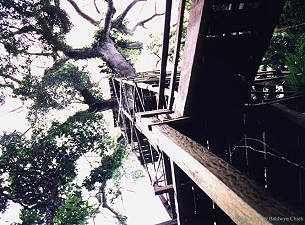

We are stirred out of sleep by our wakeup call at six. One of the staff walks around to each cabin with the greeting "Buenos Dias" to get us up on time. Early morning hikes are alot more comfortable than early afternoon. We're served with a hearty breakfast, and some really good coffee. This morning's hike takes us to the Observation Tower. The tower provides us with a bird's eye view, overlooking the jungle canopy, about 135 feet off the ground. We spot more birds, like blue-headed parrots, toucans, and too much more to keep track of.
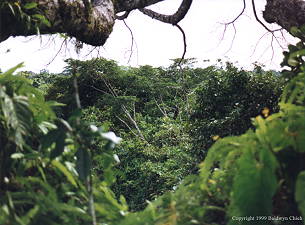
|
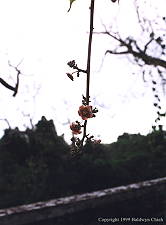
|
Continuing our hike, we find a large leaf-cutter ant nest, and watch the tiny insects carrying their pieces of leaves inside. The leaf-cutter ants store the material and let it ferment, which grows a particular type of fungus that it eats. Further along, I have the opportunity to swing on one of the thick, sturdy vines. It's a short ride, but it wouldn't be a jungle adventure without trying it.
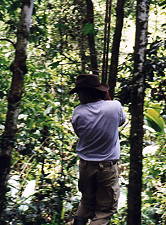
|
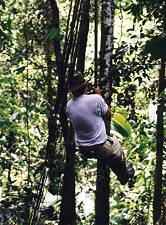
|
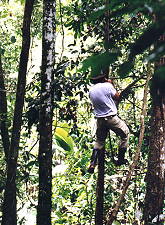
|

Back in the dugouts, we paddle through Mandiyacu Lake. Water lilies seem to float on the water, and we're quiet as we enjoy the scenery, and try to spot wildlife. Huge black and white dragonflies buzz around the water surface.
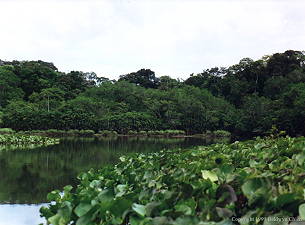
|
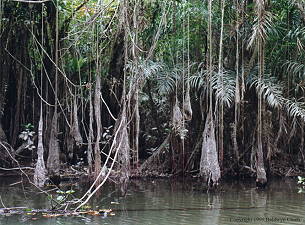 |
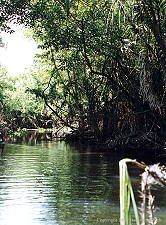
|
 Greater Ani |
The afternoon is a bit more lowkey, as we start off by visiting the La Selva Butterfly Farm. Here, the lodge breeds butterfly, and produces as many as 35,000 a year. The live pupaes are sent all over the world to zoos and gardens. The insects are incredibly varied in colour and size. Before entering the farm, a small case contains dozens of live pupae that shine like costume jewellry. Ninety seven different species are raised here, with the largest being almost 4 inches tall.

|
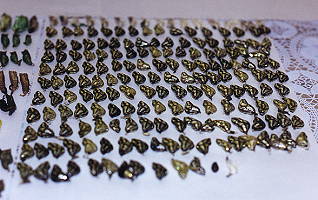
|

|
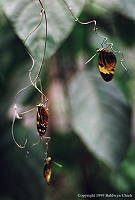
|
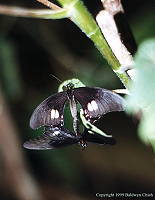
|
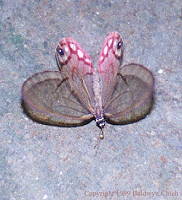
|

|
For the rest of the afternoon, we're introduced to fishing La Selva-style. Given a small bamboo handle, we use a fishing line, hook and bait. I'm hoping to try and catch a pirahna, but end up just feeding fish by the dock.
After dinner, we venture out in the canoes for a night excursion. The southern hemisphere sky glows with stars, far away from any city lights. Gus wields a powerful floodlight that we use to search for caimans. Turning it on reveals dozens of bats flying around us, undetected until now. We scan the water surface for the glowing eyes of the caiman, and once we do, paddle quietly towards their location, floodlight darkened. We got close to a couple of them, some people in the boat saying that one was 4 meters in length, but for those of us close to the back we only caught part of their heads before they dove into the water.
